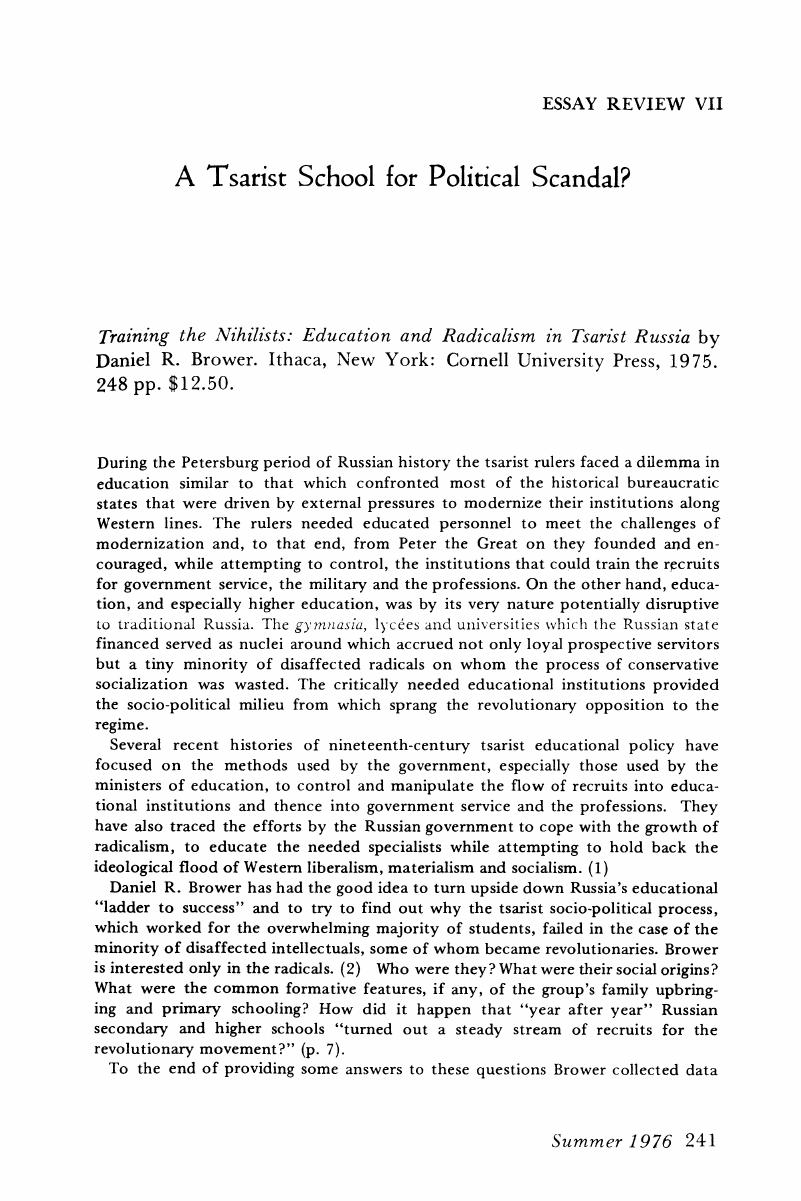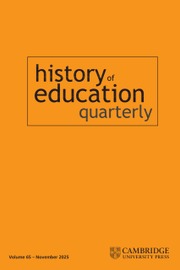No CrossRef data available.
Article contents
A Tsarist School for Political Scandal?
Published online by Cambridge University Press: 24 February 2017
Abstract

- Type
- Essay Review VII
- Information
- Copyright
- Copyright © 1976 by New York University
References
Notes
1. Alston, Patrick L., Education and the State in Tsarist Russia (Stanford, 1969); Johnson, William H. E., Russia's Educational Heritage (New York, 1969); Miller, Forrestt A., Dmitrii Miliutin and the Reform Era in Russia (Nashville, 1968)—this book deals with the reform of military education; and Sinel, Allen, The Classroom and the Chancellery: State Educational Reform in Russia under Count Dmitry Tolstoi (Cambridge, Mass., 1973).Google Scholar
2. Though the work began as a study of the Russian “intelligentsia,” Brower now avoids that term altogether, because of methodological problems and the confusion as to just what it means. “The word ‘radical’ may seem banal, but it identifies the political outlook of the people in question as that of extreme opposition to the established order of Russia” (p. 35). See also Brower's, “The problem of the Russian Intelligentsia,” Slavic Review, XXVI, No. 4 (December, 1967): 638–47.Google Scholar
3. Brower, , “Fathers, Sons and Grandfathers: Social Origins of Radical Intellectuals in Nineteenth-Century Russia,” Journal of Social History, II, No. 4 (Summer, 1969): 333–35.Google Scholar
4. Ibid., 354.Google Scholar
5. Mathes, , “The Origins of Confrontation Politics in Russian Universities: Student Activism, 1855–61,” Canadian Slavic Studies, II, No. 1 (Spring, 1968): 28–45.Google Scholar
6. Jarausch, Konrad H., “Restoring Youth to Its Own History,” History of Education Quarterly, XV, No. 4 (Winter, 1975): 445–56.Google Scholar


